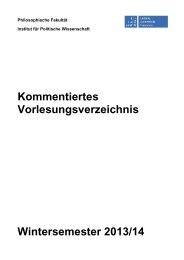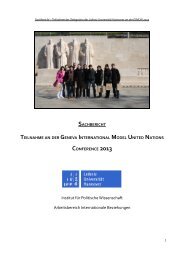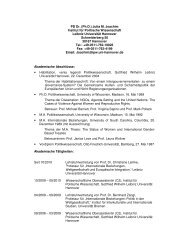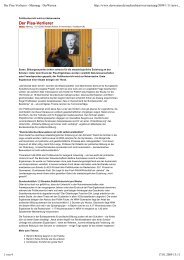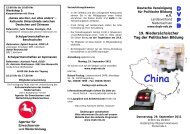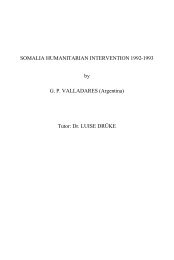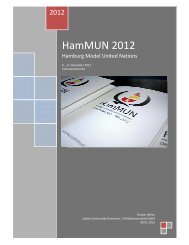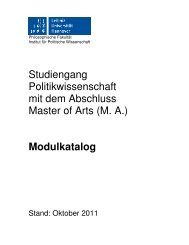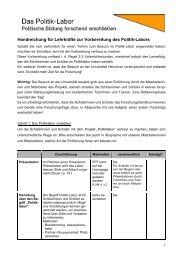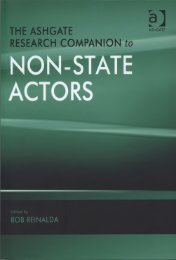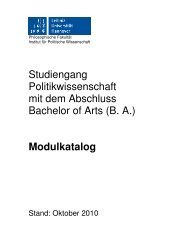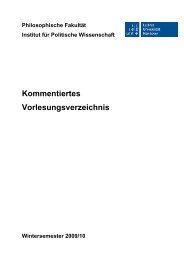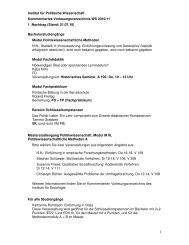Preventive Action for Refugee Producing Situations
Preventive Action for Refugee Producing Situations
Preventive Action for Refugee Producing Situations
Create successful ePaper yourself
Turn your PDF publications into a flip-book with our unique Google optimized e-Paper software.
184 Chapter 4<br />
One question interesting to us in the context of international refugee law is whether and<br />
to what extent the High Commissioner ought to get involved in such activities as<br />
monitoring events likely to cause outflows of refugees; alerting States, international<br />
organizations and world opinion to such situations; and suggesting measures to be taken,<br />
perhaps also taking certain steps vis-ä-vis the State in question. 416<br />
Though Grahl-Madsen recognizes that according to the UNHCR Statute, the<br />
work of the High Commissioner needs to be "social and humanitarian"<br />
(Paragraph 2), he believes that the Commissioner needs "all the early warning he<br />
can get. ... It would be in line with his normal activities if he took the initiative to<br />
some aid programme enabling people to stay home rather than leaving <strong>for</strong> an<br />
uncertain future abroad." 417<br />
Often the most valuable sources of early warning in<strong>for</strong>mation are the<br />
refugees who have already arrived in the country of asylum. This is especially<br />
true in the early stage of a refugee flow. At that time, interviews with refugees<br />
can be crucial in the determining whether the existing flow will taper off or grow<br />
into a massive influx. 418<br />
In<strong>for</strong>mation on which contingency and emergency plans are based has in<br />
many cases been obtained from die first trickle of refugees over an international<br />
border. In situations where resettlement is by and large the only solution<br />
available, UNHCR interviews each refugee individually, or at least each head of<br />
family. This has been its practice in Southeast Asia, <strong>for</strong> example, since<br />
resettlement countries would not start their processing be<strong>for</strong>e UNHCR<br />
established records on the new arrivals. Despite ample opportunities <strong>for</strong> in-depth<br />
gathering of in<strong>for</strong>mation, much of which could be usefully employed in a<br />
dialogue with the country of origin, UNHCR has generally refrained from asking<br />
refugees overly detailed questions about conditions in the country of origin, and<br />
the circumstances and problems they encountered be<strong>for</strong>e and during their flight.<br />
Increasingly, however, UNHCR officials have come to realize that detailed,<br />
accurate, and current in<strong>for</strong>mation on potential refugee situations is of crucial<br />
importance <strong>for</strong> the Office's ef<strong>for</strong>ts at advance planning. 419 In<br />
____________________<br />
416 Grahl-Madsen, "The Emergent Law Relating to <strong>Refugee</strong>s," in The <strong>Refugee</strong> Problem<br />
on Universal, Regional and National Level, Thesaurus Acroasium Vol. XIII,<br />
Institute of International Public Law and International Relations of Thessaloniki,<br />
1987,p.244.<br />
417 Grahl-Madsen, "The Emerging Law Relating to <strong>Refugee</strong>s," p.244.<br />
418 Lance Clark, "Recommended next steps <strong>for</strong> UNHCR regarding early warning,"<br />
<strong>Refugee</strong> Policy Group (RPG), Washington (1988), p.l.<br />
419 See, <strong>for</strong> example Cartmail, Exodus Indochina, 1983. p.233: "For example, every<br />
Vietnamese boat leader, whose boat is rescued and whose travelling compatriots<br />
New Approaches and Policies 185<br />
its 1987 Note on International Protection, UNHCR stated that in<strong>for</strong>mation<br />
must be shared between the States and the Office, and with other<br />
intergovernmental agencies and nongovernmental organizations, to ensure "the<br />
accurate identification of situations producing flight, and or groups and<br />
individuals in need." 420<br />
Guy Goodwin-Gill asserts that there is a congruence of interest and<br />
responsibility between states and UNHCR, comprising both territorial and<br />
international elements. The territorial responsibilities involve standards of<br />
treatment, individual freedom, and community interests; "international<br />
responsibilities involve protection and assistance, attention to root causes and<br />
solutions." 421<br />
Each party to this equation must fulfill its duty. If a given state does not<br />
discharge its responsibilities in ensuring proper standards of treatment,<br />
individual freedom, and the community interest of its population, then the<br />
resulting problem becomes a matter of international responsibility. Conversely,<br />
providing protection and assistance only once people have been compelled to<br />
flee, without asking how the people came to be in that condition, might allow<br />
governments to "get away with murder." 422<br />
The requirement that UNHCR's actions be nonpolitical restricts its role<br />
only to impartiality rather than of absolute noninvolvement in such basic<br />
matters as identifying causes of refugee movements and reporting on them <strong>for</strong><br />
ef<strong>for</strong>ts to develop preventive measures. When assessing conditions that could<br />
bear on refugee flows in a country within its jurisdiction, UNHCR might just<br />
indicate in a non detailed manner basic facts, which other better suited<br />
organizations could more fully investigate<br />
disembark in Singapore, has to complete a detailed questionnaire on the time and<br />
circumstances of their escape, the type of boat and details on the journey and<br />
rescue. The answers to these 33 questions are then evaluated every month in<br />
relation to every group that is rescued and averages determined. Results arrived at<br />
include in<strong>for</strong>mation on... origin, ages and ethnic composition... showed that most<br />
of the refugees arriving in Singapore between the July Conference and September<br />
(1979) were ethnic Vietnamese and only a small percentage ethnic Chinese, a<br />
statistic that offers further strong evidence that the exodus of refugees from<br />
Vietnam has been a exodus controlled by Hanoi and designed to expel Vietnam's<br />
Chinese population."<br />
420 UN doc. A/AC.96/694,13 August 1988, p.3.<br />
421 Goodwin-Gill, "UNHCR's Expanding Mandate," Draft paper, May 1988, p.16.<br />
422 United States Committee <strong>for</strong> <strong>Refugee</strong>s, "Beyond the Headlines, <strong>Refugee</strong>s in the<br />
Horn of Africa," (Washington: U.S. Committee <strong>for</strong> <strong>Refugee</strong>s, January 1988), p.20.



